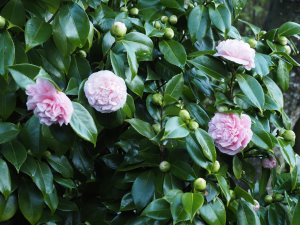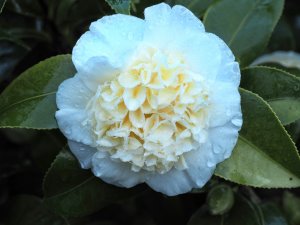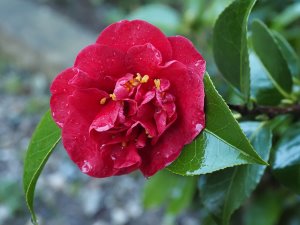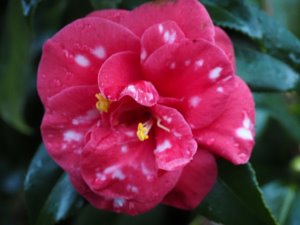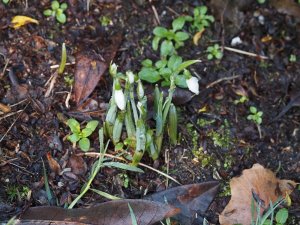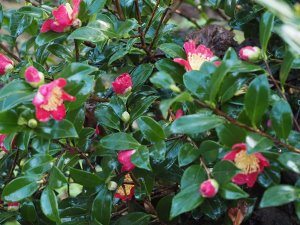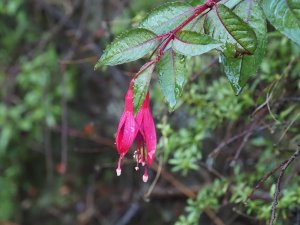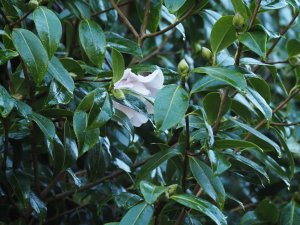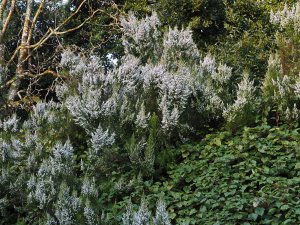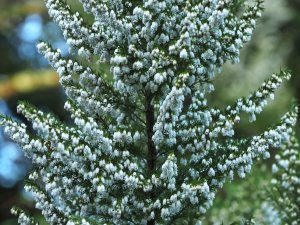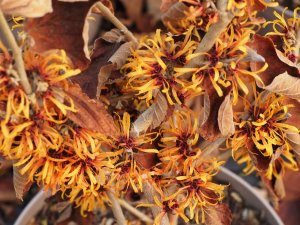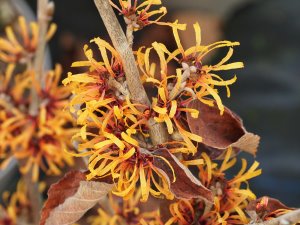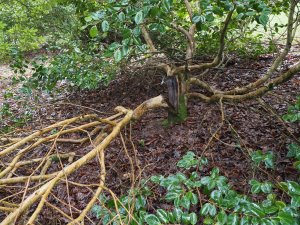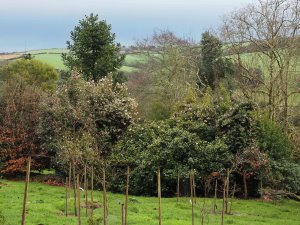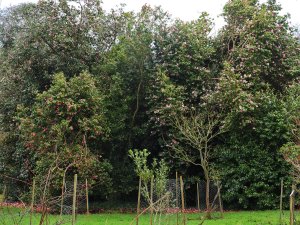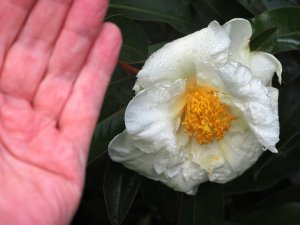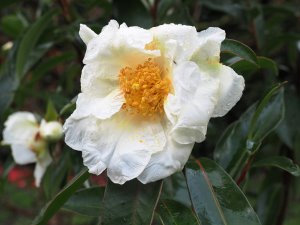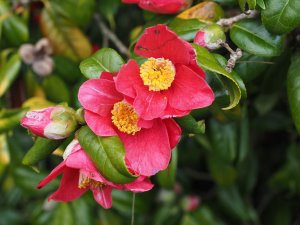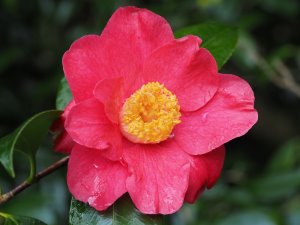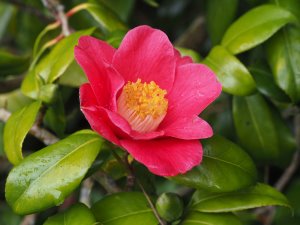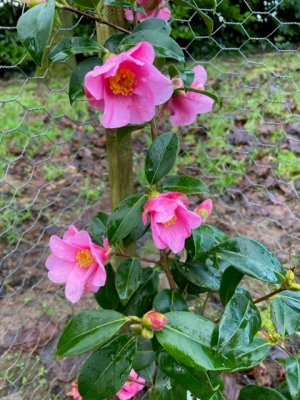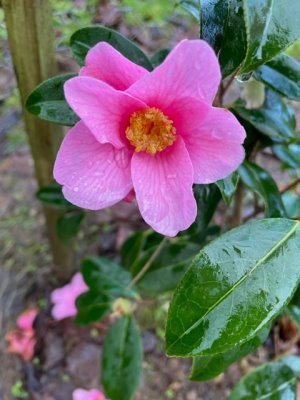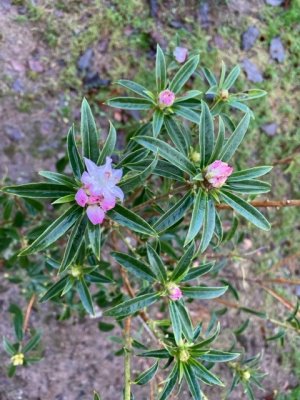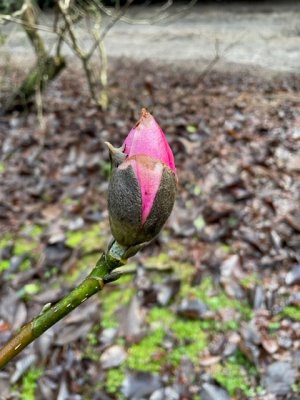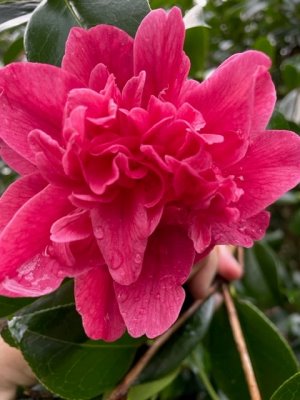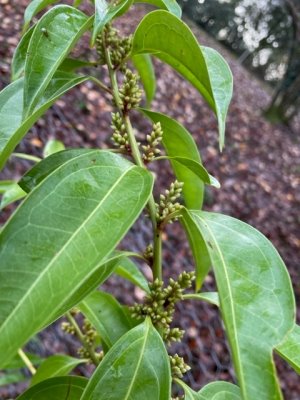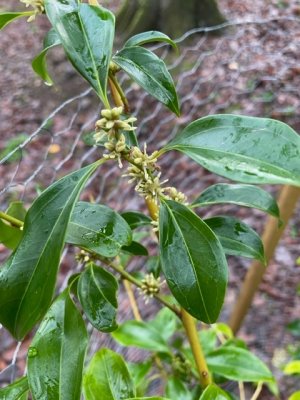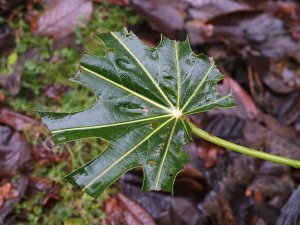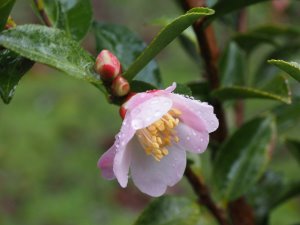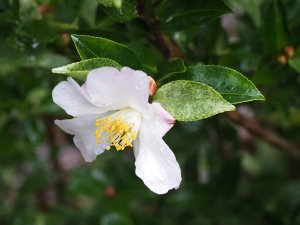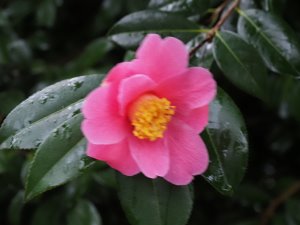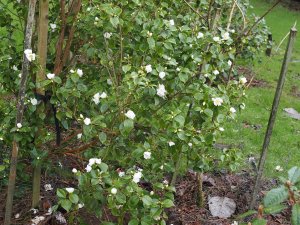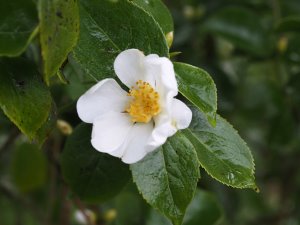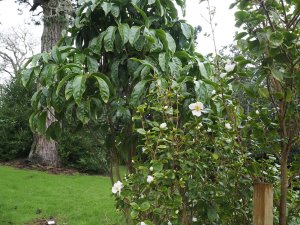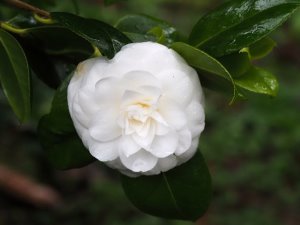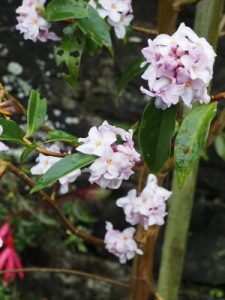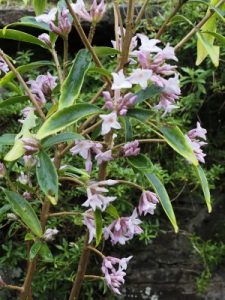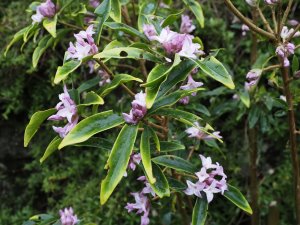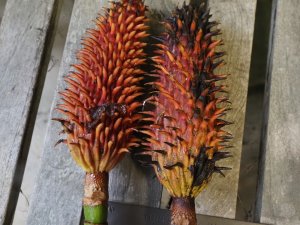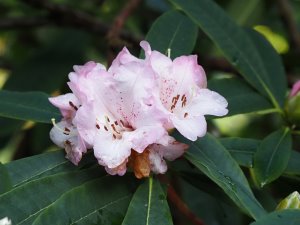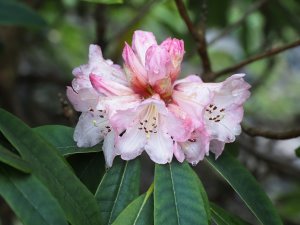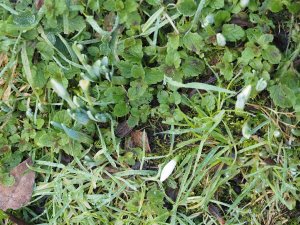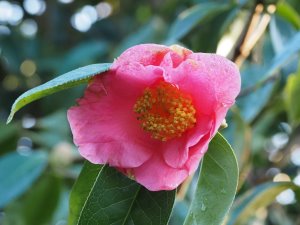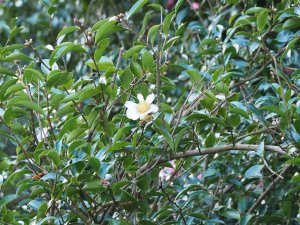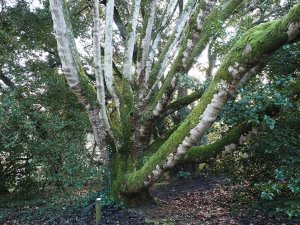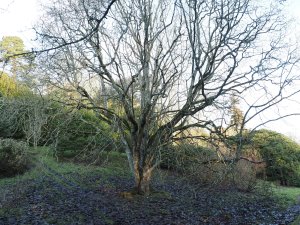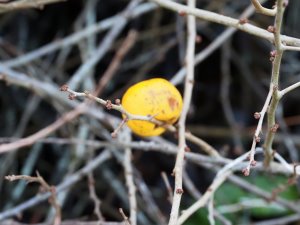2025 – CHW
A hard white frost but it only lasted a few hours. We went from -4°c today (Saturday) to +12°c on Sunday.
Camellia x williamsii ‘Monica Dance’ at her best on the drive.
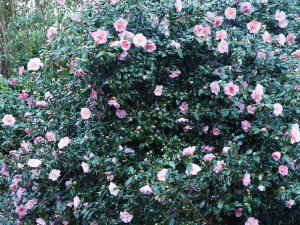
Camellia japonica ‘Debutante’.
Camellia x williamsii ‘Jury’s Yellow’.
Camellia japonica ‘Dr Burnside’ just out – later than usual and well out at Burncoose.
Camellia japonica ‘Adolphe Audusson Variegated’.
Camellia x williamsii ‘Debbie’ just about to show.
The snowdrops race on day by day.
Camellia sasanqua ‘Yuletide’ nearly over.
Fuchsia riccartonii still in flower.
First flower out high up on Camellia x williamsii ‘Delia Williams’.
Erica arborea now perhaps the best thing in the garden today.
Hamamelis x intermedia ‘Harry’ in the nursery is a new variety to me and rather good.
2024 – CHW
Wind damage and splitting in a large camellia.
Wind damage and splitting in a large camellia.
Camellia x williamsii and Camellia saluenensis seedlings make a good windbreak for the new plantings below the Main Ride.
What can beat this Polyspora for size of flower today? Sadly the wind has blown off a load of other flowers.
Camellia japonica ‘Adeyaka’ catches the eye as a very floriferous and good red variety.
Contrast it with these 3 more or less pure Camellia japonica seedlings. No contest at all really. ‘Adeyaka’ is well worth growing and propagating. I wonder if Cressy and Asia have it on their list?
2023 – CHW
A young plant in Tin Garden of Camellia x williamsii ‘St Michael’.
Flowers on a young Rhododendron davidsonianum.
Magnolia ‘Star Wars’ has colour.
Camellia reticulata ‘Mark Allen’.
First flowering here of Sarcococca balansae (WSWJ 7285)
Nearly out also in the Rookery is Sarcococca zeylanica (BSWJ 10199).
2022 – CHW
First flowers nearly out on a fairly impure Rhododendron grande seedling. Several of these have come out elsewhere as pink forms but they have more conventional grande leaf forms.
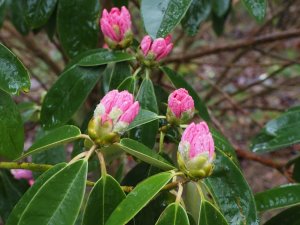
Deer nibbling on fatsia leaves – the keepers had one the other day which is a start to the spring cull. Essential!
First flowers out on a group of Camellia ‘Fairy Blush’ at the top of the plants.
First flower on a non-variegated branch of Camellia x williamsii ‘Golden Spangles’.
Camellia grijsii now full out but not smelling much today.
Camellia grijsii and Illicium majus provide an interesting contrast at Donkey Shoe.
Only a single flower so far on Camellia x williamsii ‘Jovey Carlyon’ at Donkey Shoe.
Daphne bholua ‘Gurkha’ is now full out and scenting the drive beautifully. What outstanding plants D. bholua are!
Daphne bholua ‘Limpsfield’ beside it is just about there as well (while ‘Mary Rose’ is not yet properly out).
Two fallen seedpods from Magnolia rostrata are still unripe but should now dry off and open to shed their individual seeds before long.
2021 – CHW
Milder after rain but more cold weather forecast for the next 10 days. The forecasters warn of another ‘Beast from the East’.A few flowers on one of a small clump of what are said to be Rhododendron ‘Mrs Butler’ seedlings in the plans. Hardly accurate but quite nice today. Two more still to flower.
Milder after rain but more cold weather forecast for the next 10 days. The forecasters warn of another ‘Beast from the East’.A few flowers on one of a small clump of what are said to be Rhododendron ‘Mrs Butler’ seedlings in the plans. Hardly accurate but quite nice today. Two more still to flower.
A pheasant has pecked off the flower head of the first snowdrop to appear but did not bother eating it.
A good sized flower on this young Camellia reticulata.
Still a tail end flower or two on Camellia sasanqua ‘Narumigata’ despite the frosts.
The two Magnolia dawsoniana are now finally leafless. Typical branch formation for this species – lots of spreading branches from low down at the base of the tree.
A few small ripe quinces on Chaenomeles speciosa ‘Geisha Girl’. We saw more of these earlier in the autumn when still green.




